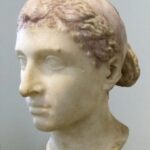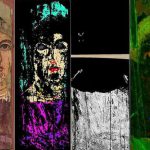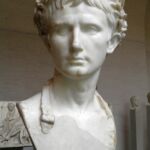Chapters
Animation showing the mummification process on the example of the Fayum mummy from the 1st century CE. The Egyptians used mummification to preserve the body after death.
Mummification began with the removal of internal organs (most often only the heart was left). Then, in order to remove water from the body, salt was sprinkled on the body and left for 40 days. The dried body was covered with vegetable oils and resin so that the flax slices would stick to the body well. The body was finally covered with several layers of linen.
In the case of the Fayum mummy, realistic portraits made on wood were placed on the heads of the deceased.
Fayum mummy portraits
Mentioned portraits were found mainly in cemeteries in the Fayum oasis (most found in the Hawara necropolis) and the Roman cemetery in Antinoopolis. It is worth mentioning that after the death of Alexander the Great (323 BCE) and his conquest, Egypt was flooded with many Greeks and the Hellenic people who settled in Alexandria and Fayum. With time, the population came to adopt the Egyptian customs of mummifying the dead.
With the subordination of Egypt by the Romans in 30 BCE the custom of placing dead wooden signs with painted portraits in the graves of the deceased appeared. They were painted using an encaustic technique (using paint dissolved in hot wax) or tempera, and both techniques were often mixed together. The paintings were painted on various types of wood: oak, sycamore, cedar, cypress, fig and citrus.
A painted portrait was put on the body of the deceased in such a way that the body of the deceased and partly the plaque were wrapped with strips of fabric, leaving a hole where one could see the image of the deceased. Sometimes, the bandage plate was simply glued.







